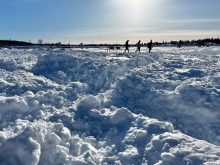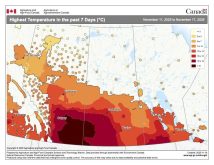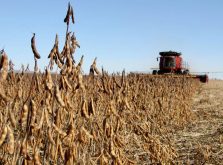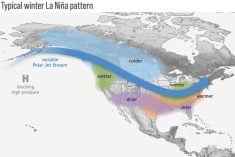As I write this there are still four days left in January. That means it’s a little too early for me to do a look back at January’s weather — spoiler alert, it was colder than average. For this issue, I am going to examine a topic that was brought up by a reader in Alberta, about sunspots and how they might impact weather here on Earth.
To start off, just what are sunspots? They are visible dark areas that form on the sun’s surface or photosphere, thus the term “spots.” They are the result of an intense magnetic flux that pushes up from the interior of the star. These strong magnetic fields keep some of the heat from the interior of the star from reaching the surface in that area, causing the surface to cool slightly, thus creating a darker area. Coinciding with the number of spots is a more active sun, with increasing solar flares, coronal mass ejections and outputs of X-ray and ultraviolet (UV) radiation. These spots can be small individual disturbances or form large groupings. Sunspots appear to be cyclic in nature, which sees sunspot activity (the number of sunspots) going from a minimum to a maximum and back to a minimum number roughly every 11 years. While 11 is the average length of time for sunspot cycles, they have been as short as nine years and as long as 14 years.
Read Also
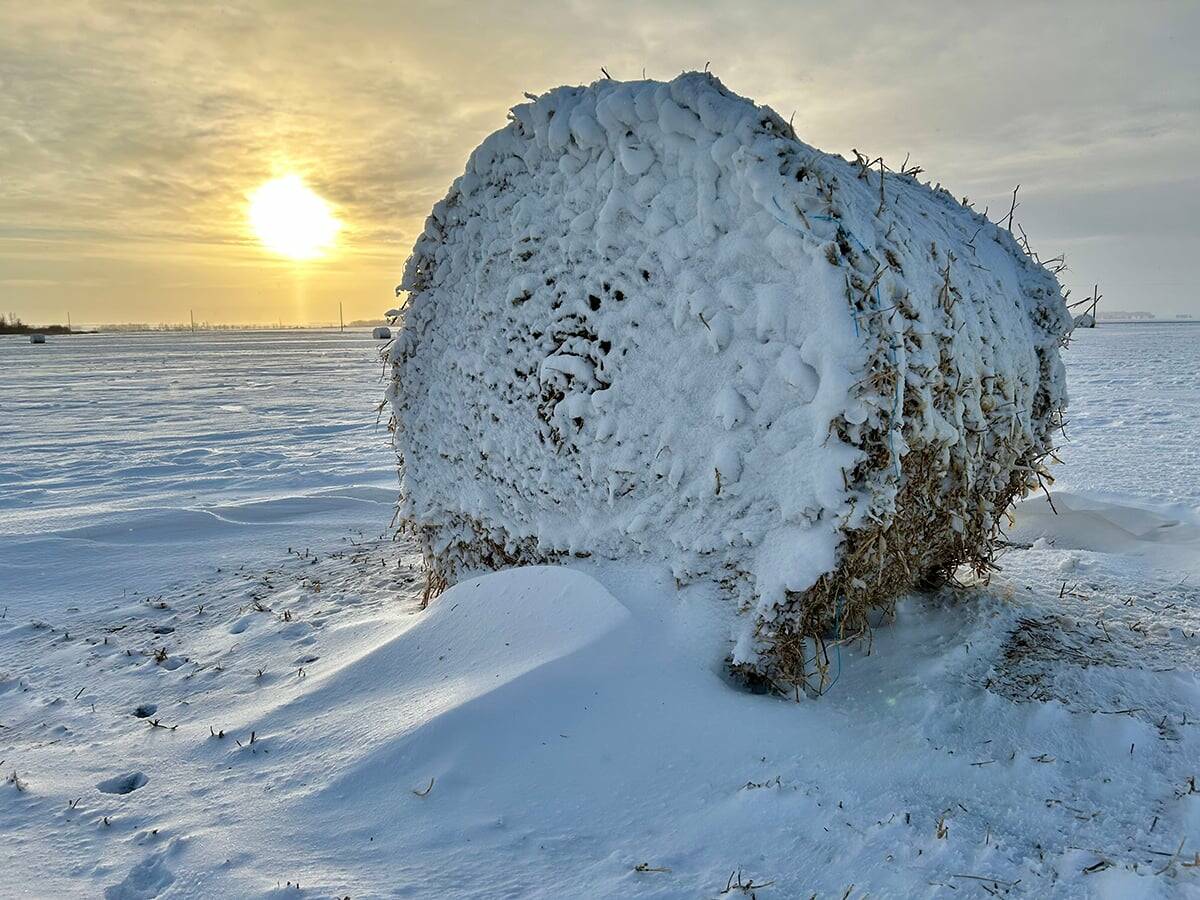
What is perfect Christmas weather?
What is ‘perfect’ Christmas weather on the Prairies? Here’s where you should head this holiday, according to historical weather data.
We have a relatively long record of sunspot activity going back to the early telescopes (1600s) and scientists began numbering sunspot cycles in 1755. This makes the cycle that started in December 2008, cycle No. 24. Since cycles last for around 11 years, we should have hit a minimum of activity in 2019, which we did. Since then, activity has begun to increase as we move into cycle 25.
What does this have to do with the weather on Earth? Well, it doesn’t really impact the weather but there is evidence that it impacts the climate, which in turn can impact the weather. Remember: weather is the short-term behaviour of the Earth’s atmosphere (days to months), while climate is the long-term trends in that weather (years to centuries). When sunspots increase, the amount of energy coming from the sun increases a little bit. Since Earth’s weather is driven by the energy we receive from the sun, an increase in energy from the sun should impact how our atmosphere behaves. More energy usually equals warmer temperatures. So, during periods of sunspot maxima, the Earth often warms up a little bit and conversely, during minimal sunspot activity we often cool down a bit.
Probably the most famous of these warming or cooling periods is known as the Maunder Minimum or “Little Ice Age” that occurred over parts of the Earth between 1645 and 1715. During this time there was very little sunspot activity, earning this phase of sunspot activity the name “Grand Solar Minimum.” This long period of very low sunspot activity, combined with some volcanic eruptions, resulted in a drop in the Earth’s average temperature. I remember back in university where we looked at the art being created in Europe during this time, and we discovered several paintings of ice-skating or playing on ice-covered rivers and canals which almost never freeze today, never mind to levels thick enough to allow people to safely go onto the ice. Stepped gardens facing south, to maximize heating from the sun, became popular. There was another low period of sunspots from about 1795 to 1825, which also correlated with a period of lower global temperatures.
Record warmth
While the correlation between sunspot number and global temperatures is not super strong, there is good evidence that low periods result in a drop in global temperatures, and conversely, that high periods help to boost global temperatures. The correlation is not strong because other events, such as volcanic eruptions and the release of heat-trapping gases from human activity, can override and mask the impact of the sunspot cycle.
Here is where it gets interesting, in my opinion. The last sunspot cycle (No. 24), which spanned from 2008 to 2019, was the lowest cycle since 1795 to 1825. While our ability to forecast the strength of the next sunspot cycle is not great, the prediction is that it will be around the same strength as the last cycle. This means we are in the middle of a significant low period of sunspot activity, easily on par with the 1795 to 1825 one. If you look at the graph of global temperatures spanning from 1750 to 2000 you can see a significant drop in global temperatures during the 1795 to 1825 low sunspot period. It is important to point out there was no corresponding increase in volcanic activity during this period to account for this cooling.
Leap forward to our current situation. We are in what appears to be a historically low period of sunspot activity, which should be causing global temperatures to cool — yet nine of the 10 warmest years on record for the Earth have occurred during the last sunspot cycle. One might now argue that 2021 was only the sixth-hottest year on record, so maybe the cooling that is usually associated with the solar minimum is just starting to kick in. 2021 was also a La Niña year across the Pacific, which usually results in a drop in global temperatures, and this was likely the main reason 2021 was not another record-breaking year.
Is this low sunspot activity helping to mask or hide the amount of warming occurring? What might happen in the 2030s to 2050s when we move into solar cycle 26, which will likely see more activity, and a corresponding increase in global temperatures? Something to think about.





